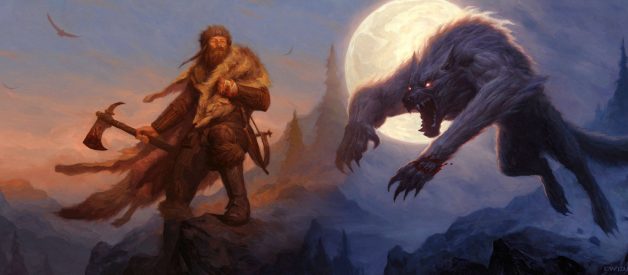?Ach! Hans, run! It?s the Lhurgoyf! ? ? Saffi Eriksdotter, last words
Magic cards were hard to find in upstate NY. It took my Dad and I an entire morning of asking before we finally got a yes from a comic store located in the back of a run-down mall some towns over. It was the summer of 1995 and all the kids at my day camp were playing this new game with trading cards that I found just fascinating. When I asked them what they were playing the response was simply: ?Magic?.
My first deck was a starter deck from Ice Age, which had been released that summer. The smell of the cards, the tiny print on the rulebook, and the lexicon of new words all contributed to a childhood fascination that I can still remember today. Having always been interested in the fantastical, being able to ?summon creatures? and ?tap mana? was like a dream come true. The game was very complex; I don?t think anybody I knew had actually read the entire rulebook. Rules were disseminated by older kids answering the annoying younger kids? questions. But figuring out why an Earth Elemental could kill an Air Elemental and survive was different from math homework, it was fun.
As I grew older, the game drifted from me. I couldn?t afford cards, and my parents were realistic. To them, spending money on ?Magic cards? seemed like a pure waste. They couldn?t stop me from going to Barnes and Noble and reading the guides that Wizards published with all the cards in them though. Despite not playing, the game never left me. My interest in Magic was just in hibernation.
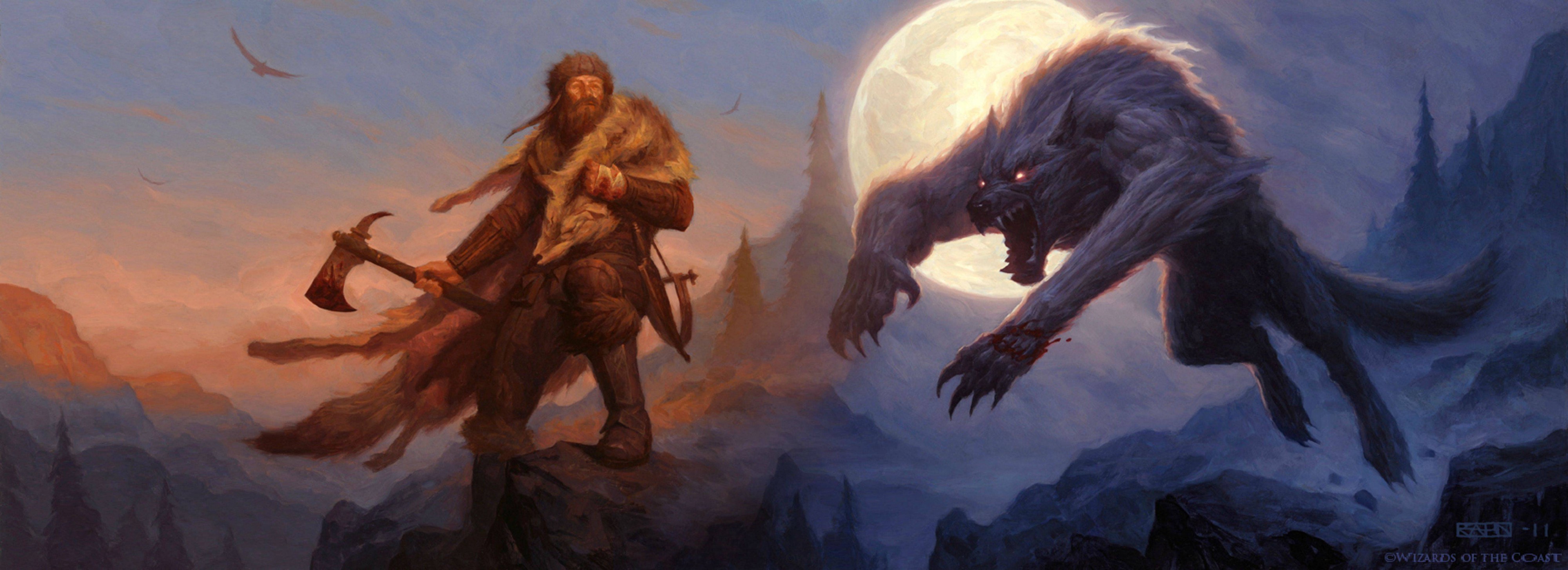
In the summer of 2008, the summer after my freshman year in college, I found my first paying internship. It was in Boston and I happened to live near a store called Pandemonium Books and Games. The current set was Shadowmoor – Eventide. Booster drafts at the store cost $15, still quite expensive for an 18 year old, but they had a new format called ?cube drafting?. You couldn?t keep the cards after you drafted, but the cards were much more fun, and only cost $5. Why not? Cube drafting became the best crash course in Magic: The Gathering rules and interactions a returning player could have. The 6-year-old me that I had put away for safe-keeping all those years ago came rushing back to the front of mind.
Returning to college and inspired by my summer of cubing, my friends and I made our own cube from crappy cards that we pooled together. We would stay up until 4 in the morning playing Magic on the dressers in our dorm rooms, wearing only boxers. Cheap Chinese food and all night drafts, what more could one ask for? Around this same time, Magic design had started a revival. The addition of the planeswalker card type in Lorwyn and then mythic rarities in Shards of Alara back-to-back contributed to an explosion of interest in the game. I had gotten back in at the right time.
But simple dresser-top magic wasn?t enough for a college student with too much free time. So I turned to the Internet. Content creators such as AverageDrafter and MTGOvideos.com provided a window into competitive drafts online, while The Rumor Mill on MTGSalvation was always a bookmarked site during spoiler season. I grinded my way to 1800 on MODO with what little money I had and it raised my understanding of the rules to a whole new level. Card tech was being shared rapidly and pushed pros to form the beginnings of teams. When LSV and his gang of thieves named Team ChannelFireball took down Pro Tour Paris with Caw-Go (Ben Stark actually won), I saw just a group of friends gathering in a house to play the game they love, and yet winning the top prize in all of Magic.
Magic has come a long way and I have come the same way alongside the game. Today, the only sanctioned events I can afford to play are Prereleases. There is a great store in Berkeley, CA called Eudemonia that I frequent and it is a haven for the game. Along with serving Spikes, Eudemonia organizes tournaments and release events where only young children can enter, and they are some of the most popular events there. It is hard to describe, but there is something endearing about watching the excitement of six year olds not unlike myself twenty years ago, of all races and colors, kneeling on chairs announcing to the whole room the new planeswalker they just opened. All the while their parents whisper amongst themselves along the walls of the store, trying to grasp just what this game could be, that can make their kid so happy.

This top 10 list has nothing to do with the power level of the cards nor the price. This list is mostly is a strike back to a time when Magic cards were something more than cost efficiency, when the cards themselves told a story of imagination, casual dominance, and idyllic fantasy. When the cards were, for a lack of a better word, magic.
Keldon Warlord

Look at the muscles on this guy. This card was simply badass. He was one of the few cards that people knew of that had X/X as the power and toughness. For a kid, this meant that the Keldon Warlord?s power had absolutely no limits. The art oozes sword and sorcery and his card type was Summon Lord?Cool!
10. Elven Riders
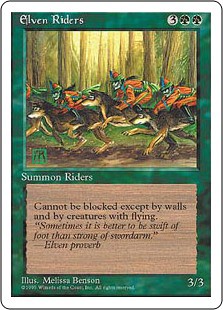
Agility. That?s what I see when the Elven Riders are summoned. These guys can?t be easily blocked, and gets in there for nice three damage chunks. You can really feel the speed on this card, and it captures a side of the color Green that you didn?t normally get with all the Ironwood Treefolk and Craw Wurms running around at the time.
9. Ball Lightning

The casting cost, art, and creature type all scream damage. One of the most confusing rules in Magic is summoning sickness, and every beginner in Magic has been guilty of trying to attack with a creature as soon as it was played. This card could attack for 6 power as soon as it came down! Take that Eron!
8. Psychic Venom
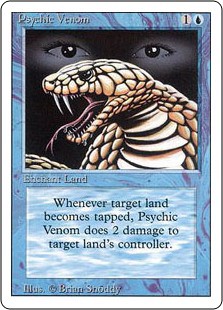
When playing against a Blue deck, they didn?t beat you, you beat yourself. Between this card, Icy Manipulator, Counterspell, and Jester?s Cap, kids got an early start to dicking around and griefing their opponents.
7. Ashen Ghoul

Ugly. Ugly. Ugly. An unnatural 3/1 body, boosted with haste and could come back from the dead. Graveyard shenanigans. The card evoked the feeling of sifting through your dead and rewarding your nefarious plans. Look at that Ron Spencer art! Is it laughing?
6. Giant Trap Door Spider
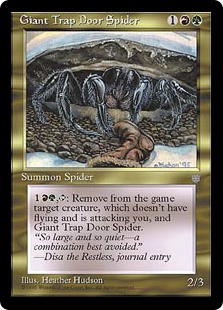
This might be one of my favorite names on a card ever. The effect was unique, the art was scary, and it represented Ice Age so well. I loved this card as a kid and it will have a soft spot in my heart always.
5. Force of Nature

To summon forth this Force, one had to pay 4 Green mana? and then 4 Green mana again every turn after that just to keep it under control. The card really felt like you had to restrain this creature with mana, tying him to your will or he would trample loose like the badass he is. For the Pokemon fans out there, he was like a high level pokemon that didn?t listen when you didn?t have enough badges.
4. Shivan Dragon
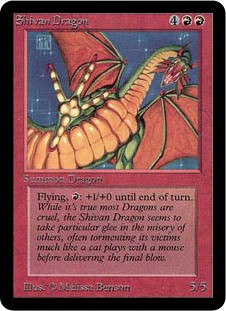
When I first started playing, owning this card instantly made you friends. It had the card Firebreathing tacked on for free, and it hit hard, often ending games in one attack. I love the perspective on the art, and its 5/5 body was the standard from which all cool creatures were judged.
3. Serra Angel
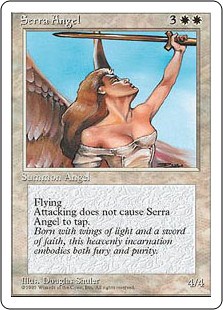
Who can argue with white girl boobs? A simple creature with beautiful art; it captured the angel saving trope so well. The opponent couldn?t attack anymore with little ground idiots once you cast Serra Angel, all the while you smacked your opponent around in the air with that nice 4/4 body.
2. Leviathan
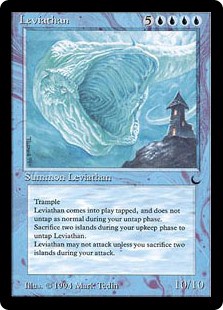
The card was almost a legend, because someone always knew somebody who owned one. It was the biggest creature when I first started playing, bigger than Colosusses, Forces, and Pit Lords. The P/T was in the double digits! I always though it was fitting that Blue had a reputation of summoning the biggest creatures (re: Polar Kraken) because Blue represented going the deepest in learning about mana. Only Blue had the arcane knowledge that could pull forth the largest beings.
1. Black Lotus

People who haven?t even played Magic know about this little flower. To many people it?s so hard to see why such an innocuous effect can command the highest price of any Magic card ever. But when I look at a Black Lotus, I see fleeting petals turned into mana and the promise of legend, the beginnings of a sequence of events that can either crash horribly or generate an entire storm, a turn that begins with 7 cards in hand and no permanents in play and ends with infinity.

